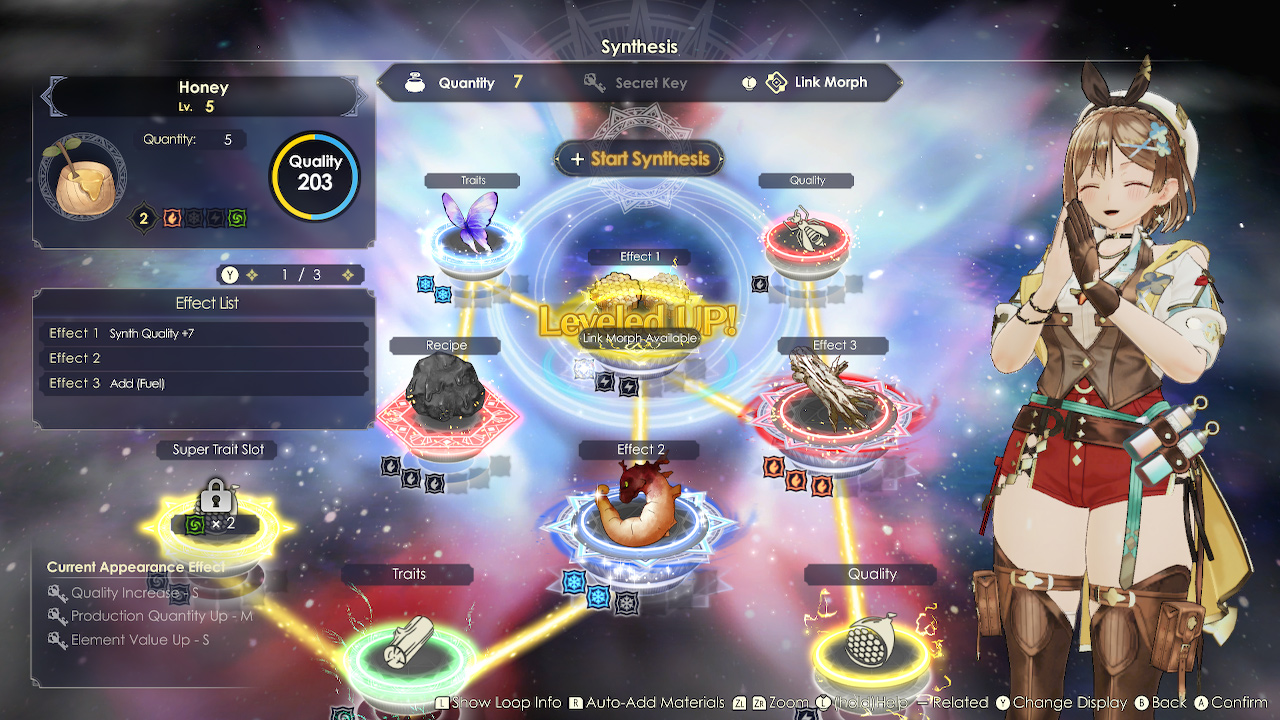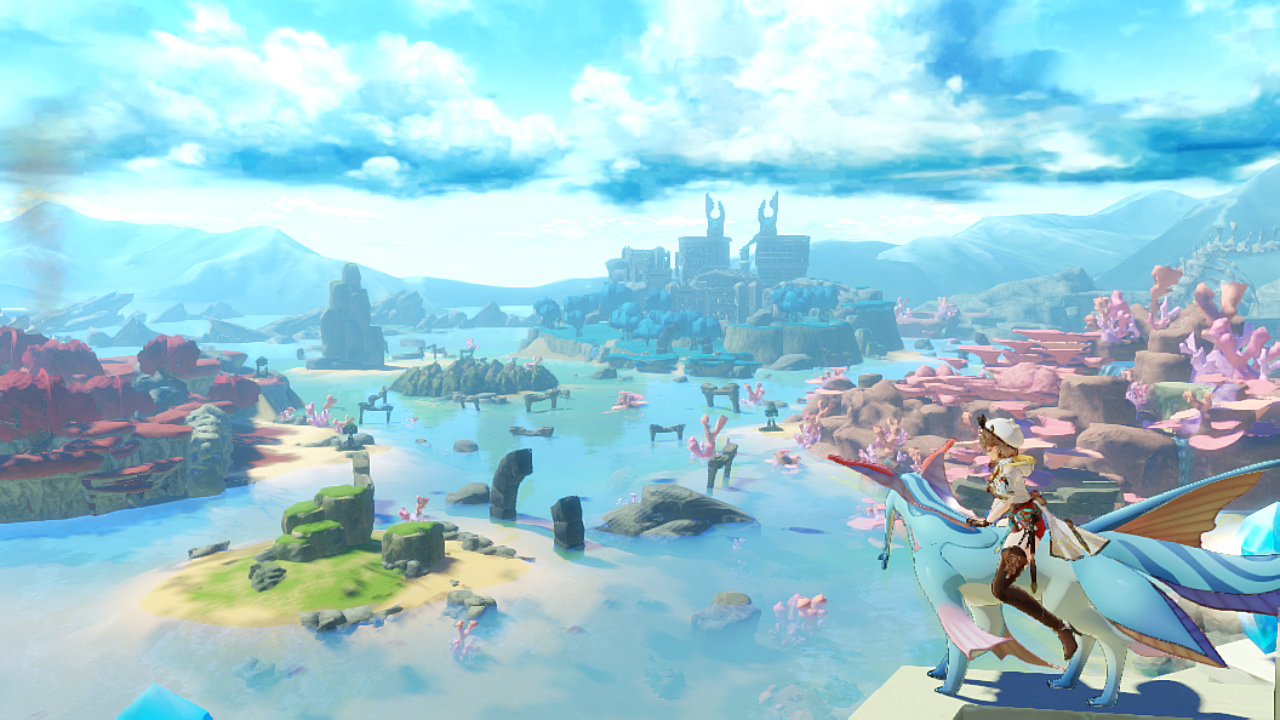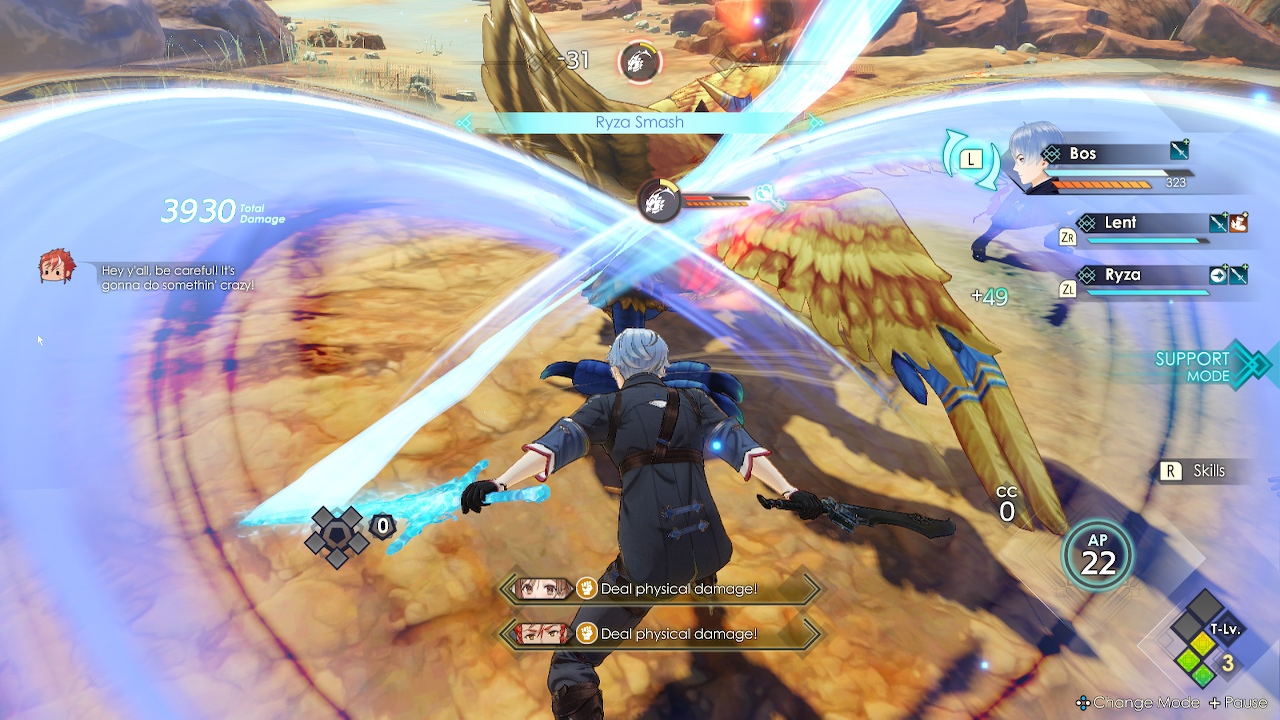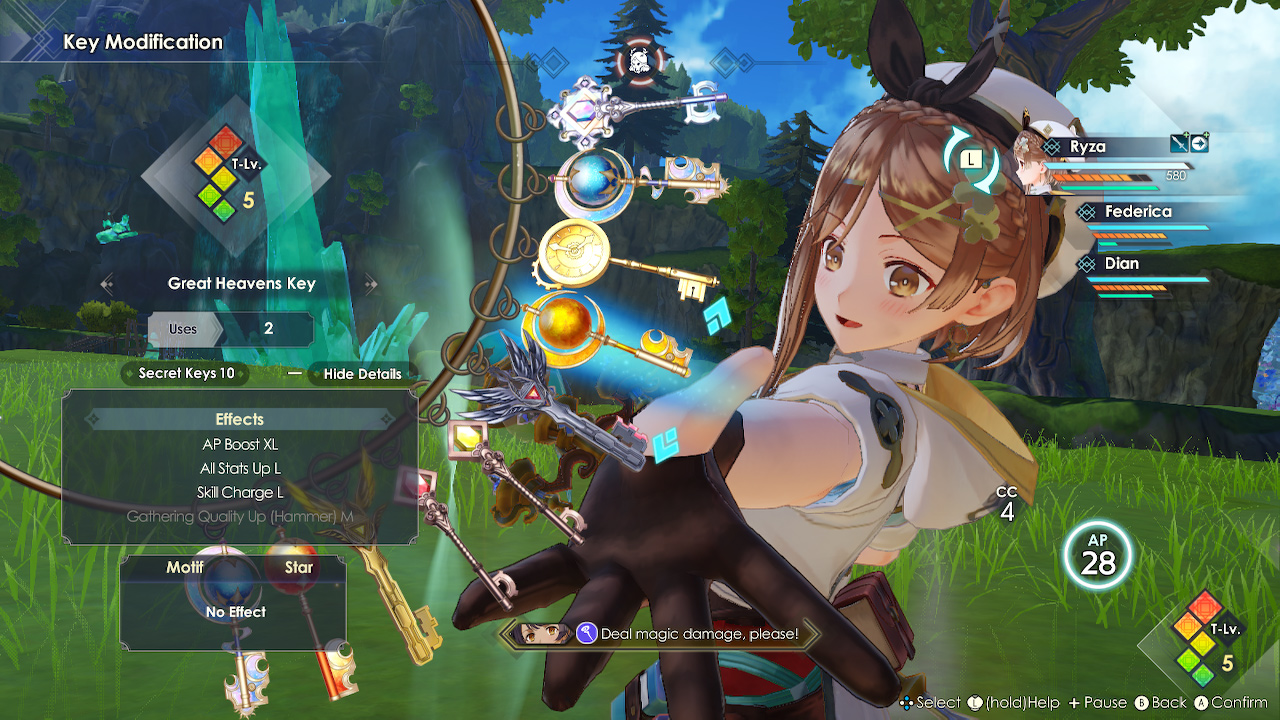Review: Atelier Ryza 3: Alchemist of the End & the Secret Key (Nintendo Switch)
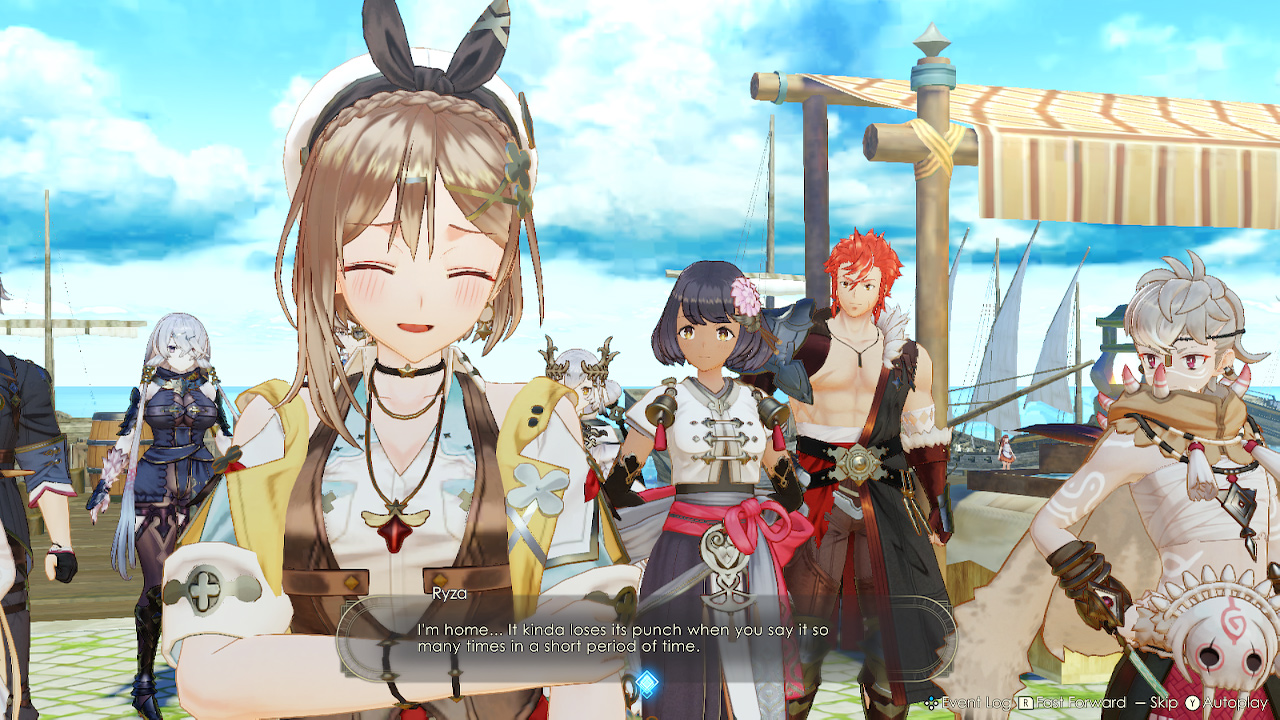
Atelier Ryza 3: Alchemist of the End & the Secret Key was my most anticipated game this spring. I mean, sure, Zelda’s on the horizon, but I knew this (likely) final adventure for Ryza and her growing band of friends would effectively fill the time ahead of Zelda’s release. And it does…mostly.
Ryza 3 is set a year after our heroine left Kurken Island to experience the big city lifestyle of Ashra-am Baird in Atelier Ryza 2: Lost Legends & the Secret Fairy. She’s now back home in Kurken, and her alchemy skills—at one point confusing and unsettling to the townsfolk—are very much in demand. When an archipelago suddenly appears nearby, it’s up to Ryza and her friends to investigate. Do these islands have anything to do with the events of Ryza’s previous adventures? The group relishes the opportunity to find out.
As with the previous games, the party starts small but grows quickly. Ryza begins with Lent, Tao, and Bos by her side, the latter character becoming playable for the first time. Klaudia joins the mix fairly quickly, and a bit later we’re introduced to our first new character: Federica. Eventually, players will be able to optimize and swap between nearly a dozen characters—new and familiar—in combat, making for a hectic but continually evolving experience.
It’s a lot to manage, especially when you consider all the crafting that has to be done to keep your party up to snuff. But that, of course, is the point of the Atelier games; item crafting is at the game’s very core, and Atelier Ryza 3 presents countless ways to ensure you’re spending the proper amount of time at the cauldrons.
It all starts with item collection. Atelier Ryza 3 offers the biggest world yet, and it’s packed with items to harvest along the way, either by picking them up or using tools such as a hammer, bug net, or ax to grab them. The selected tool and its level determine what you’ll get, and even those have to be crafted and enhanced to be properly used. The crafting system is basically the same as in the previous Atelier Ryza games, so fans will be comfortable with the process (save for the keys, which I’ll get to in a bit). However, the interface isn’t quite as visually clean as it was in the past; I found it harder to determine which element to move to next and to see what exactly an item will do when crafted. (Speaking of hard to determine, the dialogue text is vindictively small. Not sure how that got past quality control.)
Crafting is also somewhat muddied by the open world approach to exploration. Unlike in Atelier Ryza 2, for example, areas aren’t opened up linearly. There aren’t dungeons to explore and clear (so, sadly, no mysteries to decipher) in order to progress to another area. As such, there are a ton of craftable products at the onset that you have absolutely no ability to craft—and won’t for quite a while. Settling for lesser products with the crafting items on hand was disheartening.
And did this massive world also hurt the graphics? The characters look great both while exploring and during their dramatic, Alex Raymond-esque dramatic battle poses and animations, but the world itself is somewhat flat. Colorful, but lacking detail.
The open world also causes more meandering. The game usually tells you where to go next, but Ryza would never take a direct route, so why should the player? Reaching certain areas thankfully unlocks warp points, and you also acquire the ability to ride around quickly on the back of various animals. Wandering about often opens pop-up quests and yields valuable items, but at the cost of really slowing down the narrative and entering you into battles you’re not ready to win. If a quest requires me to explore past four or five unopened checkpoints, am I really supposed to be on that quest?
Am I ready to handle the monsters along the way? Some sort of enemy level indication would prove useful, but it’s usually not too hard to make a quick escape. And although the games have gotten better at telling you what items can be harvested from objects such as trees or rocks, I really wish players could see how many of those items are currently in inventory. The icons are often quite similar, making it hard to remember whether you have 8 or 80.
Thankfully, the battle system is the best it’s been. The modifications from Atelier Ryza 2 threw me at first, but once I grasped the new flow and interface, I came to like it more. It’s still hard to determine the immediate threat when fighting multiple enemies, but emphasis on swapping combatants and keeping them healed forces you to figure things out quickly. Tutorials surface each time a new combat component is introduced, and unless you manually bypass them, you’re forced to execute them in order to proceed. Quick attacks can be chained for better damage. Stored up AP can be used to launch targeted physical or magical attacks (watch for vulnerability indicators). CC can be used to slow things down for healing or usage of crafted items. Although it’s weird you can’t use items to heal characters between fights, you do have the option during combat to heal those who aren’t in the active battle party. I think I swapped combatants in the first ten hours of Atelier Ryza 3 more than I did throughout the entirety of the first two games. That’s a good thing; it makes it harder for combat fatigue to set in.
Then there are the titular keys. All aspects of Atelier Ryza 3—crafting, exploration, and combat—are affected by key creation and use. The keys are obtained at numerous places throughout the game’s world, and can then be utilized however you see fit. Use them while crafting to improve your results. Use them during combat to power up buffs or to expand your AP attack chains. Use them while exploring to open new areas or improve your harvest. They’re a useful tool that, again, prevents the game’s proceedings from growing stale, but I really wish they’d been better explained at the start. What does it mean that there are only four uses left, when that number doesn’t drop when I use them? Why can I not equip a key in a character’s key inventory slot? I was a few dozen hours into the game before I really felt I had a grasp on how to properly use keys, but maybe that’s on me. I recall being a few dozen hours into the first Atelier game I played before I was fully comfortable with crafting.
We’ll call it a positive aspect, then, that Atelier Ryza doesn’t demand perfect execution for the player to proceed. It’s very much possible to push forward and enjoy the adventure without mastering each and every aspect of gameplay. At the atelier, you can let the game handle the crafting for you (fine for quickly generating items you need to craft better things, but you risk wasting valuable items in the process). And as long as you have a couple characters with solid healing abilities, you can bully your way through fights without taking full advantage of your high-damage moves.
But Ryza’s not a bully, and that’s not the way to play this game. I’ve read it can be completed in 40 hours. I suggest doubling that; exploring every corner of the map and tinkering relentlessly with item crafting will provide greater rewards. When you feel like playing an action game, fight. When you feel like playing a puzzle game, craft. Atelier Ryza 3 is equipped to be what you want.
That flexibility, however, slows down the story, and it’s a very good story. As before, the stakes are small at the start, and they never grow to the typical JRPG level of god killing. Instead, the emotional impact comes from the characters and their relationships—how they view each other and the world around them as they become more deeply attached to it. And even during the moments that are especially tense or wistful, there’s an optimistic vibe that carries through—not a lot of anime-style screaming to be heard here.
Atelier Ryza 3: Alchemist of the End & the Secret Key therefore succeeds entirely at its own pace. Despite moving towards the open world approach of Breath of the Wild or Xenoblade Chronicles, for example, it’s not concerned with competing against them. It wants you to enjoy it for what it is, and that’s very easy to do. I did prefer Lost Legends & the Secret Fairy, but just barely. This is still a cozy but intricate adventure that closes the Atelier Ryza trilogy in a way that should please most fans. Count me among them.

